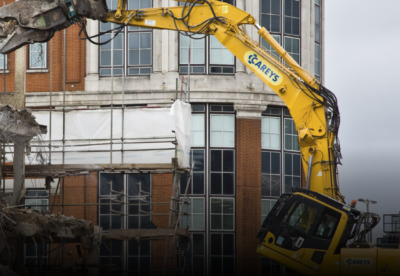Under the new smart contracts, the old method of painstakingly collecting weather data to explain challenges and delays to project programmes is over.
A new system has been trialled on several projects from Dawlish Sea Wall to Stubbington Bypass and an HS2 enabling works site. It has provided both contractors and clients with simultaneous real-time local site weather data to pinpoint ‘1 in 10 compensatable weather events’ used in standard form contracts like the NEC.
During the project, five compensation claims were triggered across four study sites, with the largest claim accounting for 21 weeks.
UK-based startup EHAB has developed the Weather Ledger solution that collects data in real-time and triggers various notifications for extremes instantly.
Both contractors are separately putting the system through its paces on projects as part of a trial funded by Government R&D body Innovate UK.
The smart contracts set up behind the monitoring system are being hailed as saving time and money, as well as also enabling a total reduction in the cost of weather risk through more effective risk-sharing.
It comes as data suggests 17% more rain is falling on rainy days and flood risk has increased 20-90% across the UK, according to EHAB.
The developers of the system are also exploring how to allow client and contractors to more effectively share the upside of fine weather.
A spokesman for EHAB said: “This “pay as you go” weather risk distribution could save the client money upfront and help contractors offer a more competitive price, while still providing clear cost parameters.
“We are also in talks with major insurers who could seek to underwrite the downsides of weather delay through a Parametric Insurance add-on to the smart contract.
“This could see the total weather risk of a project, or portfolio, capped. This may be an increasingly attractive proposition as more of the downsides of the climate crisis are realised by the industry.”
Smart contract
It’s smart because the software automatically collects the weather data collected from weather stations on site, calculates the values and will then notify, in a legally compliant way, both parties if an event has indeed occurred.
It’s a contract because both parties agree that they defer the management and operation of that specific part of the contract to the EHAB Weather Ledger.








































 (300 x 250 px).jpg)













